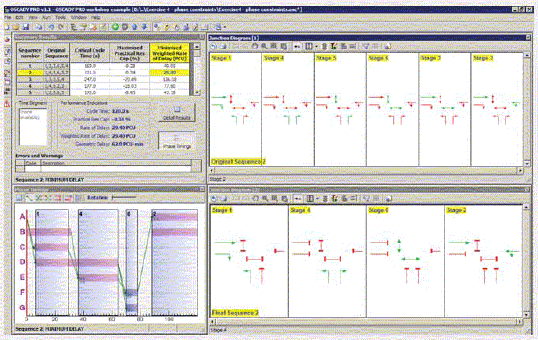The original sequence column shows the ‘original’ stage sequence, either manually input or produced by the Sequence Generator. This may or may not bear much resemblance to the Final Sequence, which is what you see in final outputs and phase/stage timings. The original sequence can be considered as an ‘initial guess’, which the optimiser then refines and adjusts. (If you are forcing stages, however, the original and final sequences should match.) Generally, the final sequence is a subset of the initial sequence.

This is illustrated in the PHASE CONSTRAINTS screenshot example. For the active solution (Sequence 2, Minimum Delay), the original stage sequence was 1,4,5,6,3,2. This is shown in the upper Junction Diagram. (See the User Guide for details of how to set up the Junction Diagram to show stage sets. Note that the diagram shows its current mode in yellow at the foot of the diagram.) The final sequence, however, is 1,4,6,2, as shown in the phase timings diagram and in the lower sequence diagram; i.e. stages 5 and 3 have ‘dropped out’ of the solution. This is because the optimiser has found that they are not necessary for the optimised solution. For example, stage 5 represents a transition between stages 4 and 6 and so is ‘merged’ with the surrounding stages.
Of course, where you wish to force a stage sequence, and prevent any such merging, you can do so easily by entering a non-zero minimum green on the stage.